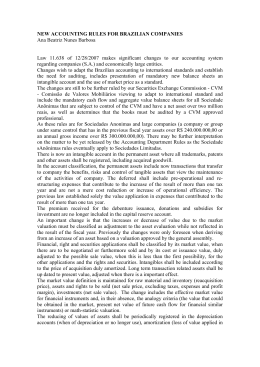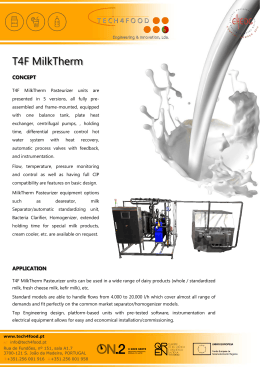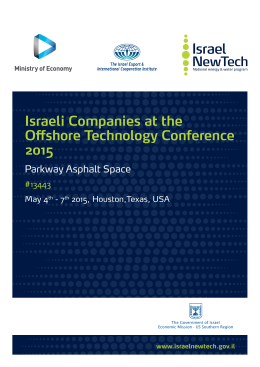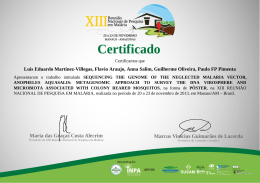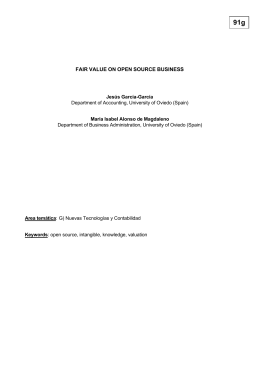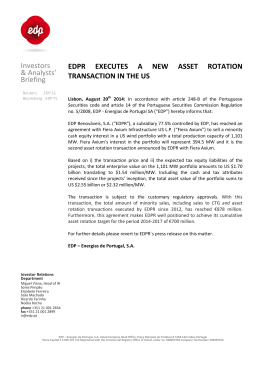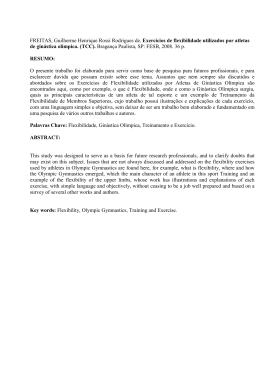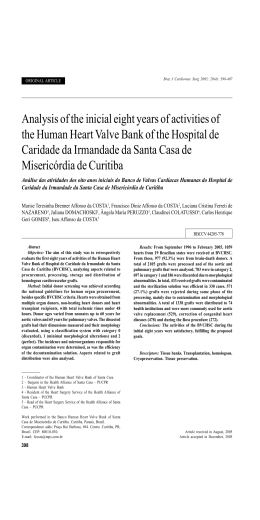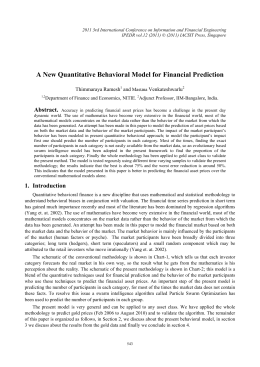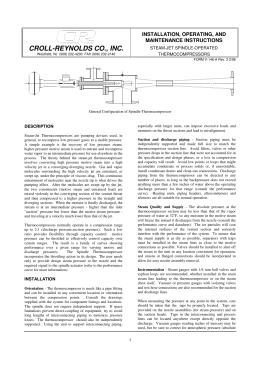IBP2372_10 OS BENEFÍCIOS DO MONITORAMENTO REMOTO DE VÁLVULAS DE CONTROLE ATRAVÉS DO GERENCIAMENTO DE ATIVOS 1 Paulo F. Fernandes , Charles N. Silva2 IBP2372_10 OS BENEFÍCIOS DO MONITORAMENTO REMOTO DE VÁLVULAS DE CONTROLE ATRAVÉS DO GERENCIAMENTO DE ATIVOS Paulo F. Fernandes1 Charles N. Silva2 Copyright 2010, Instituto Brasileiro de Petróleo, Gás e Biocombustíveis - IBP Este Trabalho Técnico foi preparado para apresentação na Rio Oil & Gas Expo and Conference 2010, realizada no período de 13 a 16 de setembro de 2010, no Rio de Janeiro. Este Trabalho Técnico foi selecionado para apresentação pelo Comitê Técnico do evento, seguindo as informações contidas na sinopse submetida pelo(s) autor(es). O conteúdo do Trabalho Técnico, como apresentado, não foi revisado pelo IBP. Os organizadores não irão traduzir ou corrigir os textos recebidos. O material conforme, apresentado, não necessariamente reflete as opiniões do Instituto Brasileiro de Petróleo, Gás e Biocombustíveis, seus Associados e Representantes. É de conhecimento e aprovação do(s) autor(es) que este Trabalho Técnico seja publicado nos Anais da Rio Oil & Gas Expo and Conference 2010. Resumo Este trabalho tem como principal objetivo mostrar a importância na realização do monitoramento remoto de válvulas de controle de plataformas de exploração de óleo e gás. O monitoramento remoto traz como benefícios, além da redução de custos, a redução de embarques de técnicos especialistas e por consequencia, o aumento na segurança. A forma de monitoramento remoto proposto neste trabalho, utiliza softwares de gerenciamento de ativos instalados nas plataformas porém com acesso pela equipe de engenheiros da base. Neste trabalho, também é apresentado o modelo de gestão de ativos através de equipamentos sem fio (adaptadores wireless), capazes de reduzir ainda mais os custos de instalações e manutenções. Abstract This paper has the main purpose is to demonstrate how important is the control valves remote monitoring to oil & gas platforms. The remote monitoring delivers as benefits, beyond cost reduction, people on boarding cutback and as a result, increase in security. The way to remote monitoring described in this paper, uses Asset Management Software installed on platforms however, with onshore access by engineering team. In this paper, will be presented the asset management through wireless devices (wireless adapters), able to reduce the maintenance and installation costs. ______________________________ 1 Engenheiro Eletricista – Emerson Process Management Ltda. – Gerente de Vendas PAM – América Latina 2 Engenheiro Eletricista – Emerson Process Management Ltda. – Gerente de Negócios AO Rio Oil & Gas Expo and Conference 2010 1. Introduction The increasing global demands for oil, associated with the impending closure of oil wells of countries typically known as big producers such as the Middle East, meant that Petrobras, taking advantage of his experience of decades in deep water exploration, were still finding new opportunities further and deeper, and today, the Pre-salt layer is now a reality. Reservoirs with an estimated 8 billion barrels, the Pre-salt could be the "Gold Mine" of the country, not for the huge technological challenges to be overcome; starting with the depth of the wells, which can reach over 7000 meters of the seabed and not less complicated, the distance to the coast, more than 180 miles. Currently, the most widely used mean of transport is the helicopter that performs daily flights to the platforms, bringing all kinds of passengers, from doctors and engineers to technicians and operators. This trip, besides having a very high cost, is often dangerous and accidents are imminent. Not less complicated is the exploration activity itself, which has always had an extremely sensitive and high risk. While companies do their work under the most stringent security procedures, even today, with all applied technology, we can feel and see the damage that an accident on an oil platform may cause. Petrobras is an example of a company that follows a strict policy of good practice and high technical precision in aspects related to equipment and personnel training. And thinking of safety improvement and cost reduction, Petrobras seek every day for ways to operate and maintain their platforms with the minimum number of technicians onboard, without giving up the efficiency and reliability of production. The solution adopted to reduce effective board takes the need for remote operation and maintenance, some platforms installed in the North Sea - Norway, for example, already have these characteristics, and one that has approximately 1000 control valves, is remotely monitored by a team of specialists who identify, through an asset management system, operational problems occurred prematurely in such equipments, causing the maintenance crew to act even before the turnaround, avoiding not scheduled turnarounds and possible accidents. However, deploying a system of remote asset management is not a simple task, the system must be able to keep up online with the "health" of equipment, increasing availability, reducing process variability, avoiding not scheduled turnarounds, and most importantly, reducing maintenance costs and logistics platform. 1.1. The example of success that comes from the North Sea Located in the Oseberg oil field, Norway, Norsk Hydro ASA (Oil & Gas Division), belonging to the group Statoil ASA, has four platforms, called Oseberg A, B, C and D. Figure 1. Norsk Hydro ASA's Platform Through a partnership between Emerson Process Management and Bjørge Solberg & Andersen, they have created onshore, a Collaborating Centre for remote monitoring diagnostics of control valves. All control valves of the platform were equipped with smart positioners capable of diagnose the performance of the valve-actuator in real-time. 2 Rio Oil & Gas Expo and Conference 2010 Through the asset management software (AMS) they monitor, remotely, all indicators of performance of the valve, such as loss of pressure in the actuator, deflections of the course, excessive friction rod, cycle count, among other available diagnostics. Furthermore, the onshore crew can also perform calibrations and adjustments of the positioner, eliminating or minimizing the need for shipments of technical experts. The real-time monitoring of the status and performance of the control valve, made the maintenance ceased to be corrective or preventive, to become predictive. Moreover, the way that monitoring is conducted, ie, remotely, has made the cost of maintenance to be reduced, mainly because of reduced shipments of technical experts, and also that the intervals were extended. But the biggest benefit of this architecture was undoubtedly the increase of personal safety. 2. The control valves and their maintenance challenges In general, one can say that the control valve is a device whose purpose is to cause an obstruction in the pipe, in order to allow greater or lesser passage of fluid. This obstruction may be partial or total, manual or automatic, in other words, it is any device that uses a mobile part to open, obstruct or regulate passage through a pipe. Its main objective is to control the flow of the stream. Typically, during a maintenance shutdown, all the control valves are removed from the process and sent to the maintenance shop, where they are tested, opened, repaired, calibrated and installed again. But often, this dismantling is not needed, which increases costs and shutdown period. A clear example of this rework occurred at a refinery in Brazil, where 230 valves were removed from the line and sent to the maintenance shop, however, was detected that 37% of the valves just need calibration, 27% could have been repaired on site, and 5% of valves do not require any action, ie only 31% or 71 of 230 valves really needed to be repaired and the other 159 could be inspected with the proper asset management software. According to industry experts, predictive maintenance does not fully replace the more traditional methods (preventive and corrective), but complement them. While traditional methods of maintenance are based on routine services (preventive) action and the failures occurred (corrective), the predictive maintenance program specific tasks of maintenance, acting only when it is actually needed, reducing the number of unplanned outages and providing a more reliable programming tool for routine preventive maintenance. In order to mitigate unexpected failures and reduce unnecessary spending, the platforms are even more aware that it is necessary to establish a system for predictive maintenance. Petrobras platforms from Campus’ Basin (UN-BC), had already developed a system for predictive maintenance of control valves, where they are periodically tested and diagnosed by qualified experts through special software and equipment, issuing reports stating the "health" of the valve assemblies -actuator-positioner, allowing the coordination of maintenance scheduling tasks. 3. The Asset Management System It’s correct to say that there was a significant technological advance in the maintenance model applied in these platforms; to make predictive diagnosis in valves is a major step towards increasing the reliability of the system, however, it is noteworthy that currently, these tests are usually made offline, ie, to generate a complete diagnosis of the valve-actuator, it is necessary the technician goes to the field, often is necessary to mount scaffolds, but mainly, the valve must by-passed. That is, despite the high technology involved in these analysis tools, the technician boarding is still needed, which makes the procedure more expensive and time consuming, on average, a technician can diagnose, from valves signatures, only three sets a day. At the beginning of this paper it is clear that the goal of the offshore companies is to be more effective in reducing people on board and the use of offline tools goes completely against these principles. So, the question is: how to perform online predictive diagnostics, without the need for specialist technicians are present to accomplish this task? You can do it remotely? The answer is yes, but for this, the plan must be prepared to perform this task. And being prepared is to have a solid asset management system that goes beyond software. 3 Rio Oil & Gas Expo and Conference 2010 The concept of asset management is not new: it was originated in the 1980s when companies reclassified maintenance models, adding the concepts of predictive and pro-active, adding to existing corrective and preventive. Through these new models, expected an increase in the availability and reliability, increase safety, better final quality of the product, less variability, concern for the environment and a longer useful life of equipment, making it a vital element in the search for Operational Excellence. Through asset management, maintenance team are working increasingly integrated into the operations and engineering team, assuming a very important role within plants, being responsible for lower costs and increase operational efficiency. However, the correct deployment of the asset management system is not a simple task. First, companies must break some paradigms from the traditional model of maintenance and make a clear cultural change in the way of working of your team where the player goes to work on a pro-active, attentive to the signs of each equipment, causing minor flaws that do not result in major problems, or even in the worst cases, accidents. Another very important point in decision making is the correct choice of the asset management system: it should be able to communicate with all instruments in the plant, regardless of brands, must have a clear graphical interface, simple and uniform, where alerts instruments are easily identified and interpreted, must provide access and parameterization tools and especially to be able to perform tests and analysis of predictive diagnostics on control valves remotely, eliminating the need for shipping, thereby increasing operational safety. A complete asset management system should also assist maintenance personnel in the calibration management, enabling the increase of intervals between preventive actions on the equipment. 3.1. The traditional asset management system architecture Set the correct asset management system architecture is the first step to success, however, it’s not enough; the equipment (instruments and control valves) need to be able to communicate with this system. About the instrumentation (temperature, pressure, flow, gas detectors, etc.), they must be prepared to use digital communication protocols such as HART and / or Foundation Fieldbus. In additional, the control valves must be equipped with smart positioners, which provide diagnostics that allow, through asset management software, assess the integrity of the valve-actuator or abnormality of the process. These information diagnosed through smart positioners is essential to detect potential deviations before they become serious problems, becoming a fundamental tool for improving the effectiveness of the team of maintenance / operation of the platform. In the figure 2, highlighted in red, a positioner can be seen mounted on an intelligent control valve: Figura 2. Detalhe de montagem do posicionador inteligente These smart positioners has the ability to perform diagnostics with the valve in service (online) suggesting specific actions, or the valve out of service (offline), performing advanced diagnostics, providing a detailed analysis of the actuator-valve-positioner. This analysis, in general, is made from a graph of displacement (travel) of the actuator x pressure, which is called the Valve Signature: 4 Rio Oil & Gas Expo and Conference 2010 60 20 0 -20 -40 Valve Closed Differential Pressure (psi) 40 -60 -80 -100 -20 0 20 40 60 80 100 120 Travel (deg) Figura 3. Assinatura de Válvula Through theses graphics is possible to identify: • • • • • • • • • Problems at valve internal components Actuator integrity (leakage) Travel measument Bench set calibration Positioner calibration (I/P) Worn Seat/Seals/Packing Tuning Problems Hysteresis/Deadband issues High/Low levels of friction Once defined the instrumentation and control valves must be able to asset management, the next step is to define the system architecture. Today, new platforms on Campos’ Basin (UN-RIO), are prepareds with multiplexer network, that allows the HART signal be separated from the control signal (4-20mA), and then, send to the asset management software. Figura 4. Diagrama de rede de multiplexadores de sinais 4. The benefits of Remote Monitoring of Control Valves 5 Rio Oil & Gas Expo and Conference 2010 The implementation of a predictive diagnostic program on control valves bring significant benefits to the platforms, reducing costs, decreasing variability or even avoiding unnecessary shutdowns. We also saw in section 3 that it is quite possible to perform predictive diagnostics online, ie with the valve in service we can have a great visibility of what is happening with the set, however, the architecture of current Asset Management Systems also makes it necessary to onboard specialized technicians, since asset management system’s server is only available on the platform. The table 1 shows a cost comparativei using two different methods to predictive on 150 control valves in a curse of 1 year: Table 1. Cost comparative of control valves analysis – onshore x offshore Method Valves quantity Analysis Recurrenceii Total analysis in 1 year Analysis per dayiii Total daily in 1 year Daily cost Quantity of shipping in 1 year Flight cost (estimated) Annual expenditure Anual Savings Offshore analysis Onshore analysis 150 150 3 months 3 months 600 600 3 3 200 200 R$ 2.500,00 R$ 1.200,00 14 --R$ 3.000,00 --R$ 542.000,00 R$ 240.000,00 R$ 302.000,00 Notes: (i) We are considering only costs related to control valves diagnostics services. This comparative consider the platform already have the necessary resources as: smart positioners and asset management software. (ii) We are some UN-BC platforms already had a predictive diagnostics programs, where these analysis are performed each 3 months. (ii) The quantity of valve analysis is a rate experienced by Emerson Process Management, considering to get the PT (work permission) and valves by-pass. This study makes clear the enormous difference between these two different methods of analysis (onshore and offshore). However, please note that not all costs related to shipping are reported in the table above. Among them, we can still add: accommodation of the professional, place on the platform and mostly the cost of personal safety. These costs are not easily measurable; however, are extremely senses when a problem occurs. 5. Asset Management through Technology Wireless The implementation of asset management software can be a simple task, when we think, for example, on newer platforms (UN-RIO), where multiplexer network have been designed in the original project of these platforms; however the challenges are much greater when faced with older projects, when there were not the concept of asset management. These platforms, to install multiplexers networks is unfeasible, first by high costs and second by the lack of space on the platform. To address this problem, were developed a Wireless adapter for HART signals. This equipment can be installed in any field instrument that has the HART communication protocol, including smart positioners; and through WirelessHART technology, send signals to a receiver, called a gateway, which converts these signals, transmitting them to the asset management software. These adapters does not require any kind of infrastructure cabling signals, using the energy of the positioner to feed itself, thus dispensing the use of batteries. WirelessHART adapters must be certified by Anatel, and follow specific standards such as IEC 62 591 Ed.1. 6 Rio Oil & Gas Expo and Conference 2010 Figura 5. Gerenciamento de Ativos através de Tecnologias Sem-fio 5.1. WirelessHART technology Within the WirelessHART application, is necessary to establish some concepts such as security information, hardware types, network types and other key items. Security: To ensure the security of the information, the technology described below is contained in field devices, gateway and the information system: I. Encryption: This is the encoding / decoding of information transmitted. II. Authentication/Verification: These items are responsible for start/end the communication, thus ensuring the data transmission only for the right devices, ie those who actually are part of this network. III. Anti-jamming: This feature is focused on carry out the treatment in the radio frequency used for communication in question. IV. Password management: This item has the role to manage the access to the information in the field devices, and gateway. Thus establishing access levels. Hardware for wireless transmission: To transmit radio waves, it is necessary to use a physical medium. There are several types of antennas, among them the most common are: Parabolic, Yagi, Omnidirectional and Planar (cell phones). Each one is characterized by radiation pattern and gain. The technologies adopted by the models described above are divided basically into two main groups, omnidirectional and directional. The WirelessHART technology uses, in general, omnidirectional type. The main feature is its medium gain, the transmission intermediate length (350 meters line of sight), freedom of location of transmitter and receiver, ideal for Mesh networks (becomes less susceptible to the presence of obstructions in the path of the wave) and offers low power consumption. It essentially consists in the issuance of wave transmission in all directions all around you. Mesh Topology: The network topology formed with the "Mesh", whose main function self-organizing network if necessary without the need of third party intervention. The self-organized topology type has the potential to change current practices. Its main responsibilities are: Jumps in frequencies, time synchronization and self-organization of the network. Just when necessary, because any obstruction between two instruments, not the problem because the network itself is responsible for finding another way to deliver information 7 Rio Oil & Gas Expo and Conference 2010 Table 2 shows the required investments to bring a platform that already has control valves instrumented with smart positioners to the remote asset management system Tabela 2. Estimated cost to WirelessHART implementation Quantity of valves Cost per WirelessHART adapter (total)i Software cost (total)ii Total investiment Annual saving by remote monitoring Time to return of the investiment 150 R$ 300.000,00 R$ 150.000,00 R$ 420.000,00 R$ 302.000,00 1,4 years Notes: (i) The WirelessHART adapter is used to transmission of information from intelligent instruments to Wireless Gateway, and thereby obtains the diagnoses. This is an item with connections for easy installation and not interferes with the control signal sent to the control system, because only works with the HART information aggregated to the same pair of wires. (ii) We are considering the total cost of software: licenses for the server and client station, and licenses for advanced diagnostics of control valves. However, the Asset Management Software for instrumentation use in general is the same for these devices therefore do not it is necessary to purchase new software in platforms that already have the software installed and only updates. Assets Management System by WirelessHART network with remote monitoring becomes as in figure 6: Figure 6. Diagram of Asset Management System by WirelessHART network with remote monitoring 6. Conclusion: A complete Asset Management System (AMS) for control valves monitoring should contain an appropriate software able to identify all diagnostics and correct accurately equipment issues, should be able to be installed remotely, providing access to the technical platform and particularly for engineers from the base and finally the appropriate infrastructure, that can be via multiplexers networks, or even using what is most modern in the market, WirelessHART technology. The study also showed that, on a platform that performs predictive diagnostics in 150 control valves every three months, may have an annual cost reduction of up to R $ 302,000.00 by doing it remotely, or directly by the base 8 Rio Oil & Gas Expo and Conference 2010 (onshore), also showed that if this same platform, upgrade to deploy a monitoring system online, the cost invested will be recovered in 1.4 years. It is noteworthy that an asset management system can go far beyond the control valves and may add other intelligent field instruments (pressure, temperature, gas detectors, etc.), rotating equipment (turbo-generators, compressors, pumps, etc.. ) as well as process equipment and electric assets. All these assets can also be monitored remotely and in a single environment, like an asset portal for the reliability team. The benefits expected with the correct deployment of the remote asset management system in a platform, as well as identify problems early, increasing the predictive maintenance, and avoiding unnecessary costs; they also generate a gradual reduction of people on board, and increase safety. 7. Acknowledgments: This work is a result of much research and technological advances in asset management developed by Emerson Process Management in recent years, but mainly, the dedication of some professionals, who understand how important it is to be always close to its customers seeking together the best solutions to the day-by-day challenges. In particular, I want to thanks to Engineer Marcos Bruno Machado - Application Specialist / Sales, which have done an excellent job of preventive maintenance on control valves and is constantly looking for new applications and breaks paradigms. I also thank the staff of Macaé / RJ: Adil Canicoba - Sales Manager and Pedro Ataide, who, with their wide experience in exploration and production sector, have contributed with important comments during the development of this paper. And it could not fail to thank the other professionals of our technical team who are always willing to help and that somehow contributed to the development of work; Engineers Renato Paiva and Vinicius Silva. 8. References: LIMA, LUIS; MACHADO, MARCOS BRUNO. A importância da manutenção preditiva na indústria. Disponível em: <http://www.emersonprocess.com.br/scripts/cgiip.exe/WService=webdesk203/layout/layout_epm_secundario.p?WDDo cto=15715&WDNews=67514> Acesso em: 24 jun. 2010 Emerson's Asset Optimization services remotely monitor Norsk Hydro installations in the North Sea. Disponível em: <http://www.documentation.emersonprocess.com/groups/public/documents/press_releases/ogppr0303e_norskhydrox.pd f?&xBusinessUnit=Asset%20Optimization> Acesso em: 21 mar. 2010 Proven Results from AMS Device Manager Users – Emerson Process Management Website. Disponível em: <http://www2.emersonprocess.com/ENUS/BRANDS/AMSSUITE/AMSDEVICEMANAGER/Pages/ProvenResults.aspx> Acesso em: 22 mar. 2010 WirelessHART Technology – HART Communication Foundation. Disponível em: <http://www.hartcomm.org/protocol/wihart/wireless_technology.html> Acesso em: 23 jun. 2010 WirelessHART Adaptor. Disponível em: <http://www.hartcomm.org/protocol/training/resources/wiHART_resources/WirelessHART_adaptor_LIT118.pdf> Acesso em: 23 jun. 2010 9
Download
